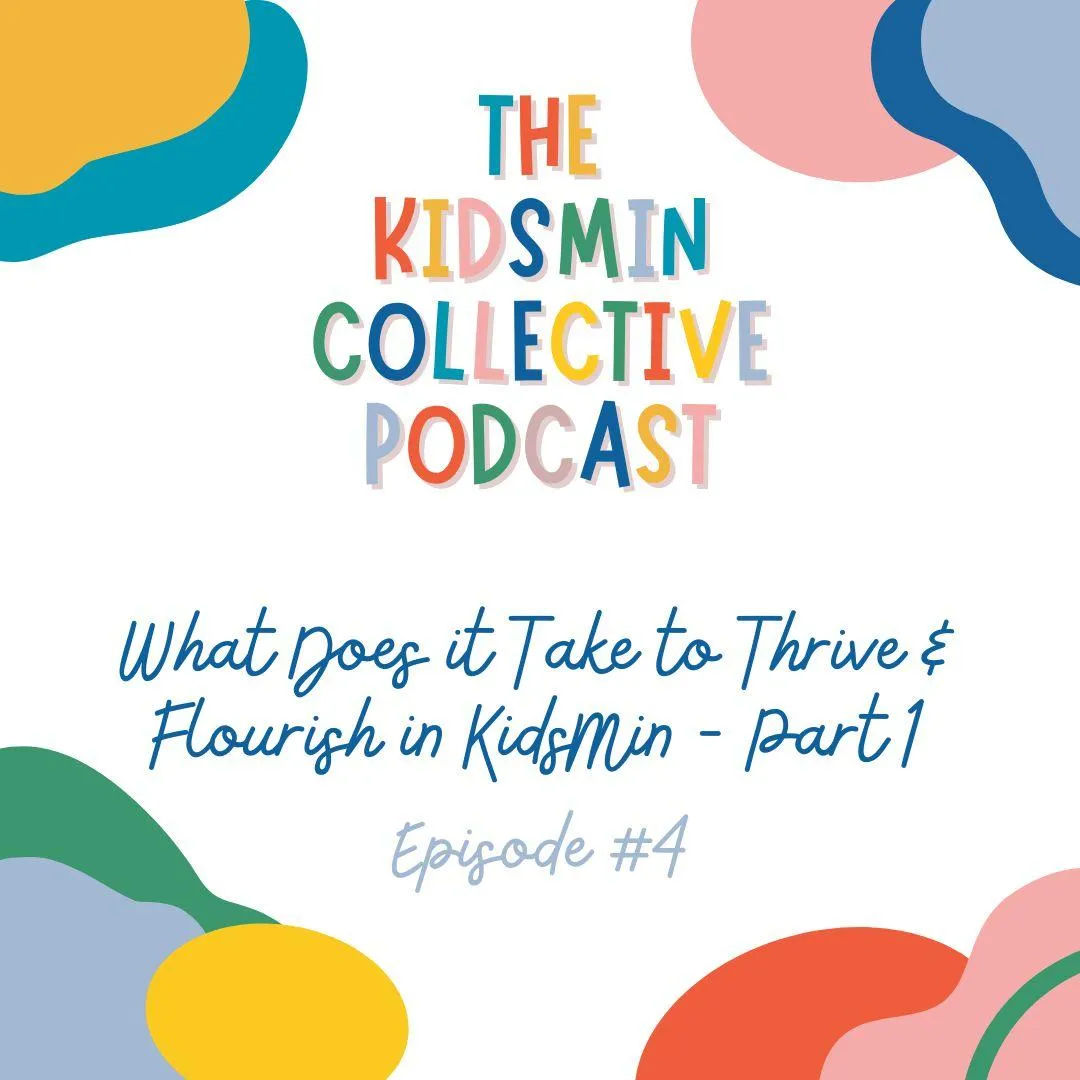
Episode #4 | What Does it Take to Thrive & Flourish in KidsMin - Part 1
What It Takes to Thrive and Flourish in Kids Ministry
Thriving in children’s ministry isn’t just about keeping up—it’s about building something that lasts. As ministry leaders, it’s easy to get stuck in survival mode, juggling endless responsibilities and constantly reacting to the next Sunday. But what if your ministry could flourish instead?
In this second part of our KidsMin Collective conversation, we’re digging into what it takes to truly thrive and flourish in children’s ministry. This post will walk through the five key pillars—what I call the 5 P’s—that create a solid, sustainable, and spiritually rich foundation for ministry growth and impact.
1. Purpose: Aligning with Mission
The foundation of a flourishing kids ministry is purpose. It starts with clearly defining and aligning your ministry around a compelling mission that reflects God’s calling for your church and community. Whether your ministry shares the broader church mission or has a unique focus, clarity here is crucial.
Every program, decision, and resource should echo this mission. A clear mission gives your team unity, direction, and a shared purpose that fuels lasting impact. When your kids, families, volunteers, and church leadership all know what your ministry is about, you create a powerful culture of alignment and intentionality.
Key Question: Is everything you do aligned with your ministry’s mission?
2. People: Investing in Discipleship
Thriving ministries prioritize people. From kids and families to volunteers and leaders, everyone in your ministry should be seen as a disciple to be formed—not just a role to be filled.
We’re called not only to share the Gospel with children but also to equip parents as disciple-makers at home and to develop leaders who lead with excellence and spiritual maturity. Ministry thrives when every person is growing as a disciple and also becoming a disciple-maker.
Key Insight: Transformation happens when people are discipled, empowered, and sent to lead others.
3. Programming: Strategic and Intentional
Programming should never just be busy work. Every event, every Sunday experience, and every curriculum choice should directly support your mission. Strategic programming engages your community and reflects the real needs of your families.
We often only get an hour each week with a child. That hour must be intentional. Programming that is Gospel-centered, developmentally appropriate, and designed for spiritual growth becomes a powerful tool in your ministry toolbox—and it starts in the nursery and continues through every age group.
Action Step: Evaluate your programming through the lens of purpose. Is it intentional? Is it fruitful?
4. Physical Space: Creating Environments That Speak
Your ministry space matters more than you might think. Whether permanent or portable, your environment should communicate safety, welcome, and Gospel truth—before a single word is spoken.
Kids should walk in and feel like they belong. Your space should tell them: “You are loved. Jesus loves you. This is a safe place to grow.” From signage and setup to classroom flow, maximize your space to support connection, learning, and transformation.
Pro Tip: Your space should reflect the value you place on kids—and on the God you serve.
5. Procedures: Protecting What Matters Most
Procedures are not about bureaucracy—they’re about protection and sustainability. Strong systems safeguard children, build trust with parents, and free your team to lead with confidence.
Think check-in systems, emergency protocols, volunteer training, and follow-up processes. Done well, these procedures release your ministry to flourish by creating healthy boundaries and setting everyone up for success. They’re not obstacles—they’re on-ramps to growth.
Mindset Shift: Healthy procedures don’t hinder ministry—they create the foundation for it to grow.
Reflect and Take Action
If you’re reading this and feeling overwhelmed, take heart. Thriving and flourishing is a process—not a destination. Seasons will change. Needs will shift. But with a clear framework, you can confidently navigate what’s next.
Here are some questions to help you reflect:
Where are you currently thriving in your ministry?
Where are you just surviving?
Which of the 5 P’s is your strongest?
Which one needs the most attention?
How often do you evaluate your ministry with a clear framework?
You don’t have to process this alone. I’d love to help you walk through these 5 P’s in your own ministry. Whether it’s a solo reflection, team discussion, or coaching conversation—I’m here to help.
You can book a free 30-minute consulting call at ozarkministryconsulting.com or send me a message at [email protected].
Let’s stop surviving and start thriving—together.
